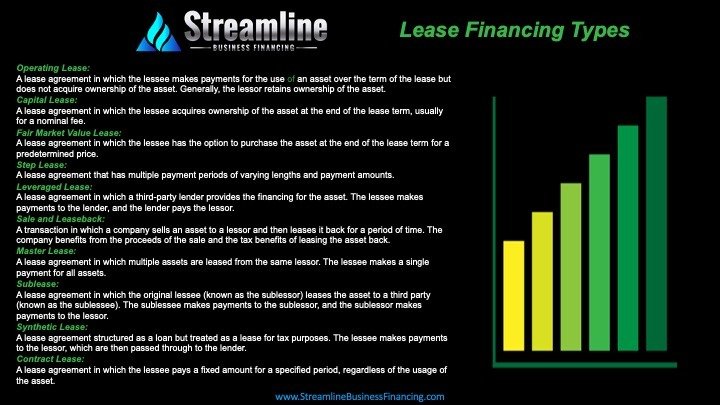
Operating Lease:
A lease agreement in which the lessee makes payments for the use of an asset over the term of the lease but
does not acquire ownership of the asset. Generally, the lessor retains ownership of the asset.
Capital Lease:
A lease agreement in which the lessee acquires ownership of the asset at the end of the lease term, usually
for a nominal fee.
Fair Market Value Lease:
A lease agreement in which the lessee has the option to purchase the asset at the end of the lease term for a
predetermined price.
Step Lease:
A lease agreement that has multiple payment periods of varying lengths and payment amounts.
Leveraged Lease:
A lease agreement in which a third-party lender provides the financing for the asset. The lessee makes
payments to the lender, and the lender pays the lessor.
Sale and Leaseback:
A transaction in which a company sells an asset to a lessor and then leases it back for a period of time. The
company benefits from the proceeds of the sale and the tax benefits of leasing the asset back.
Master Lease:
A lease agreement in which multiple assets are leased from the same lessor. The lessee makes a single
payment for all assets.
Sublease:
A lease agreement in which the original lessee (known as the sublessor) leases the asset to a third party
(known as the sublessee). The sublessee makes payments to the sublessor, and the sublessor makes
payments to the lessor.
Synthetic Lease:
A lease agreement structured as a loan but treated as a lease for tax purposes. The lessee makes payments
to the lessor, which are then passed through to the lender.
Contract Lease:
A lease agreement in which the lessee pays a fixed amount for a specified period, regardless of the usage of
the asset.
